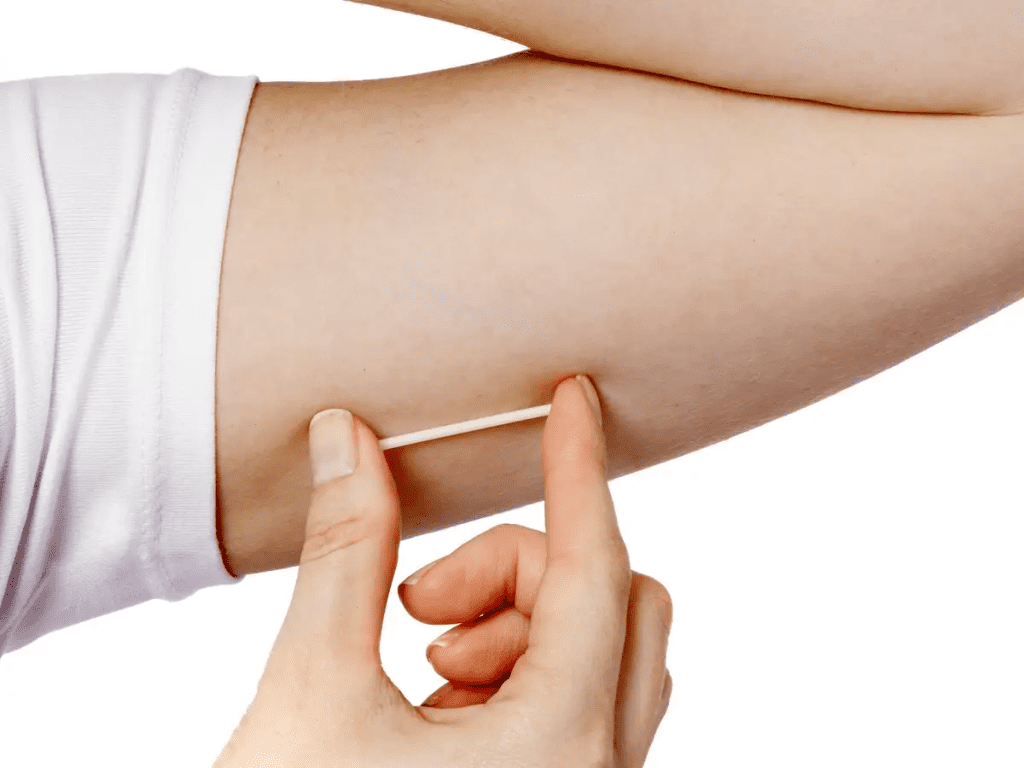When it comes to contraception, many people are familiar with pills, IUDs, and condoms. But there’s one method that often goes unnoticed unless you’ve personally used it or know someone who has—the birth control stick. If you’ve ever seen one and wondered what it is, you’re not alone. Let’s dive deep into this discreet yet highly effective form of birth control.
What Is the Birth Control Stick?

The birth control stick, also known as the contraceptive implant, is a small, flexible rod inserted under the skin of a woman’s upper arm. This tiny device releases hormones to prevent pregnancy for several years, making it one of the most convenient long-term birth control options available.
Unlike birth control pills that require daily intake or patches that need to be changed weekly, the implant offers a hassle-free solution. It’s a “set it and forget it” kind of birth control—ideal for those who don’t want to worry about contraception on a daily basis.
How Does It Work?
The implant slowly releases a hormone called progestin into the bloodstream. This hormone primarily works in three ways to prevent pregnancy:
- Stopping Ovulation – If an egg isn’t released from the ovaries, sperm has nothing to fertilize.
- Thickening Cervical Mucus – This makes it difficult for sperm to swim through the cervix and reach an egg.
- Thinning the Uterine Lining – Even if an egg were to be fertilized, a thinner uterine lining makes implantation highly unlikely.
Because it operates on multiple levels, the birth control stick is one of the most effective contraceptive methods available, with a success rate of over 99%.
The Process of Getting It Inserted
Many people feel uneasy about the idea of having something placed under their skin, but the insertion process is quick and relatively painless. Here’s what to expect:
- A healthcare provider numbs a small area on your upper arm.
- A tiny incision is made, and the flexible rod is inserted just under the skin.
- The entire process takes just a few minutes and requires no stitches—just a small bandage.
Most people experience little to no discomfort after the procedure, and the implant starts working almost immediately if inserted at the right time in the menstrual cycle.
Who Should Consider the Birth Control Stick?
This form of birth control is ideal for those who:
- Want long-term protection against pregnancy without daily maintenance
- Cannot use estrogen-based contraception (like some birth control pills)
- Prefer a highly effective, reversible option
- Have busy lifestyles and don’t want to worry about forgetting to take a pill
However, it’s not for everyone. Some women may experience side effects, such as irregular bleeding, headaches, or changes in mood. It’s important to discuss with a healthcare provider whether this method is right for you.
Common Misconceptions About the Birth Control Stick
Because the implant isn’t as well-known as other birth control methods, several myths surround its use. Let’s debunk some of the most common ones:

- “It’s painful to get inserted.”
The insertion process is quick, and most people only feel a slight pinch when the numbing agent is applied. - “It can travel through your body.”
The implant stays in place under the skin. It does not move around your body or get lost. - “It makes you infertile.”
Fertility typically returns quickly after the implant is removed. Many women are able to conceive within a few months. - “It’s visible under the skin.”
While you may feel the implant if you press on the area, it is not visibly noticeable.
How Long Does It Last?
One of the biggest benefits of the birth control stick is its longevity. Depending on the brand, it can last anywhere from three to five years before needing replacement. If at any point you decide you want to conceive, it can be removed, and fertility usually returns within weeks or months.
The Removal Process

Just like insertion, removal is a straightforward procedure. A small incision is made in the same area, and the implant is gently taken out. Some women may experience a bit of bruising or tenderness, but recovery is usually quick.
Final Thoughts: Is the Birth Control Stick Right for You?
The birth control stick is a game-changer for many women who want a low-maintenance, highly effective contraceptive. If you’re tired of remembering to take a pill every day or dealing with other short-term birth control methods, this might be the perfect option.
Of course, every person’s body reacts differently to hormonal contraception, so it’s always best to consult a healthcare provider before making a decision. But if you’re looking for convenience, effectiveness, and long-term peace of mind, the birth control stick might just be the best-kept secret in contraception.
My Son Was Set to Marry His Soulmate, Until a Secret Letter Shattered Their Fairytale Wedding

In a twist worthy of a soap opera, Nick and Emily’s dream wedding turned into a nightmare when a letter from Nick’s ex, Natalie, sparked a scandal. Unraveling a web of deceit, they confronted truths that tested their love and trust in a dramatic quest for vindication.
Five years ago, Nick introduced us to his girlfriend, Emily, and right off the bat, she struck me as someone special. It was only their second week of dating, but the way they looked at each other, it was like they’d known one another for a lifetime. Emily was clever, funny, and had this respectful manner that won us over instantly. I remember thinking, “Finally, a woman who matches my son’s heart and spirit.”
Now, it’s important to mention Nick’s ex, Natalie. She and Nick had a long history, and while their breakup was amicable, I always sensed an undercurrent of unresolved feelings from her end. So, when Emily came into the picture, I braced myself for awkward encounters at group gatherings, given that Natalie was still in our son’s friend circle.
But life has its surprises, doesn’t it? Natalie and Emily became best friends, much to my initial bewilderment. It was odd at first, watching them laugh and share secrets, knowing their shared connection to Nick. However, seeing the genuine bond they formed helped me put any lingering reservations to rest. It seemed like everyone was moving forward in a healthy, mature way.
The past, with its complicated emotions, felt like water under the bridge. We embraced Emily as part of our family, and even Natalie’s presence became a natural part of our gatherings. There was a sense of harmony, a balanced dynamic that allowed old wounds to heal and new relationships to flourish.
Emily’s presence brought a lightness to our family life. She had this way of making even mundane activities seem delightful, and her thoughtful gestures never went unnoticed. Whether it was helping me in the kitchen or engaging in deep conversations with my husband about books and music, Emily fit into our family like the missing piece of a puzzle we didn’t know we were missing.
The contrast between Emily and Natalie, in terms of their relationship with Nick and our family, was stark yet beautifully reconciled. While Natalie shared a past with Nick, it was Emily who shared his present and, presumably, his future. This dynamic, surprisingly, caused no jealousy or tension; it instead wove a richer tapestry of our collective experiences.
The lead-up to the wedding was a time of pure bliss. After numerous delays due to Covid and other life hurdles, we were finally gearing up for the big day. Emily and I, along with her mother, spent countless hours pouring over every detail.
We found the perfect snow-white dress that made Emily look like a dream. The bond between our families grew stronger during these preparations; there was laughter, shared stories, and an air of excitement that made everything feel magical.
We chose a stunning beach venue, with an archway decorated with white and pale pink flowers that framed the ocean view spectacularly. It was as if we were stepping into a fairytale, with the soft sound of waves complementing our joyous preparations.
The day before the wedding, everything seemed perfect. The rehearsal dinner was a celebration of love, family, and the future. Nick and Emily looked so in love, so ready to start their new life together. It felt like nothing could go wrong.
But then, the unexpected twist. On the wedding day, as guests started to arrive and the sun began its slow descent, casting a golden glow over the beach, the atmosphere was electric with anticipation. I was helping with the final touches when I saw Natalie approach Nick.
They shared a long hug, and then she handed him a letter. I could only hear her saying, “Read it and run.” I saw the color drain from Nick’s face as he read the contents. Without a word, he turned, ran to his car, and drove off at a speed that left everyone in shock.
The confusion that followed was indescribable. Guests were whispering, wondering what had happened to cause such a reaction. I approached Natalie, my heart pounding, and asked what was in the letter. Her smile, wide and unsettling, did nothing to ease my anxiety. “I just showed him the truth about who Emily is,” she said before turning and walking away. My mind raced with possibilities, none of them good.
I rushed to find Emily, who was in the bridal suite, oblivious to the chaos unfolding outside. The look of joy and anticipation on her face turned to one of shock and confusion as I relayed what had happened. She couldn’t understand it; she kept repeating that everything was fine, that she and Nick were happy. Her disbelief mirrored my own. How could a day so filled with love turn so quickly into a nightmare?
As Emily tried to call Nick, her hands shaking and her eyes welling with tears, I stood there feeling helpless. The joy of the morning had evaporated, leaving a heavy cloud of uncertainty. The wedding was supposed to be a celebration of love and new beginnings, but instead, it turned into a scene from a dramatic movie that you never expect to be part of your life.
After Nick drove away from the venue, leaving a cloud of dust and unanswered questions behind, the rest of us were frozen in disbelief. The joyous occasion of his wedding to Emily turned into a scene of chaos and confusion. With the ceremony abruptly canceled, guests dispersed, murmuring about what might have caused such a dramatic exit. I was left to face a room full of decorations that now seemed like relics of a joy that was never fully realized.
I found Emily in a state of utter shock, her bridal gown—a symbol of joy and union—now just a painful reminder of what could have been. She was inconsolable, her dream day shattered into pieces. I attempted to piece together the events, to understand why my son would do something so drastic. Emily, through her tears, insisted she had no idea why Nick would react so strongly to whatever was in that letter from Natalie.
The next day, the tension in our home was palpable. Nick returned, his eyes red, a mix of anger and sorrow in his expression. He looked like someone carrying the weight of the world.
It was then that he revealed the cause of his sudden departure: a letter from Natalie, containing screenshots of what appeared to be Emily kissing another man at a bar, dated just a month ago. My heart sank as he showed me the images, his hands trembling, voice filled with a mixture of rage and pain.
The letter, he explained, was Natalie’s proof of Emily’s alleged infidelity. I stared at the images, feeling a mix of anger and skepticism. How could Emily, who had shown nothing but love and commitment to Nick, be the person in these compromising photos? And yet, the evidence seemed undeniable, the timestamps glaring accusingly from the corner of each image.
I urged Nick to confront Emily directly, to seek the truth beyond the damning images. It was clear that the situation was complex, and I couldn’t shake the feeling that something about Natalie’s intervention felt maliciously orchestrated. The fact that Nick had been swayed so significantly by these images, without direct confrontation or discussion with Emily, spoke volumes about the trust issues sown by Natalie’s insinuations over time.
As a mother, I felt torn between supporting my son and seeking justice for Emily, who I believed was wronged in this devastating scenario. The cancellation of the wedding, the tears, the accusations—it all felt like a nightmare we couldn’t wake up from.
The day after that, Emily, steadfast in her innocence, urged Nick to revisit the bar captured in the incriminating screenshots. She was adamant that the images were doctored, and the truth lay within the establishment’s security footage.
Reluctantly, and with a heart heavy with doubt, Nick agreed to accompany Emily to the bar. The atmosphere was tense, as both were about to face what could be the final blow to their relationship. Upon arrival, they were met with initial resistance. The staff, wary of getting involved in personal disputes, were hesitant to grant access to the security tapes.
But as Emily and Nick shared their story, the gravity of the situation became apparent. The bar manager, sensing the desperation and the potential injustice at play, agreed to help. With bated breath, they reviewed the footage, searching for the timestamp that matched the screenshots.
And there, on the grainy screen, was the moment of truth. The couple in the footage was indeed not Nick and Emily. The woman, though similar in appearance to Emily, was clearly someone else upon closer inspection.
The man was a stranger to both of them. The realization that these images were manipulated to resemble Emily hit Nick like a ton of bricks. The deceit was palpable, and the relief that followed was mixed with a profound sense of betrayal.
The truth was both a balm and a sharp sting. Emily’s innocence was proven, but the extent of Natalie’s manipulation was a bitter pill to swallow. Nick was confronted with the reality that someone he once cared for could orchestrate such a malicious scheme. The deception was not just a simple act of jealousy but a calculated move to destroy a relationship and, potentially, two lives.
In that moment, the pieces of the puzzle fell into place. The months of Natalie whispering doubts about Emily, her seemingly innocuous comments about Emily’s loyalty, were all part of a larger, more sinister plan. Nick’s realization of Natalie’s true nature was a jarring wake-up call to the dangers of hidden malice and the lengths some people will go to fulfill their vendettas.
The stark revelation of Natalie’s deceit shattered the trust that once seemed unbreakable between them. They’ve been grappling with the shadows of betrayal, trying to piece back together a relationship that was nearly destroyed by meticulously crafted lies.
For Nick, the guilt of doubting Emily, the woman he loves, has been a heavy burden. He’s been wrestling with his own naivety and the realization that his trust in Natalie, a friend he thought he knew, led to such chaos. The journey for him has been one of learning to forgive himself, understanding the complexities of trust, and the importance of open communication.
Emily, on the other hand, faced with the immense pain of being wrongfully accused, has been a pillar of strength, yet not without her own struggles. The betrayal by a close friend, coupled with the public embarrassment of a canceled wedding, tested her resolve and trust in those around her. Her journey is one of healing, rebuilding her self-worth, and learning to trust again, not just in Nick but in the relationships that surround her.
Together, they are taking steps towards mending their bond, knowing well that the scars of such profound betrayal take time to heal. Their relationship, once a beacon of love and understanding, now bears the marks of suspicion and hurt. Yet, in these trials, there is a glimmer of hope, a testament to their commitment to one another and the love they share.
As for me, watching my son and his fiancée endure such heartache has been a stark reminder of the fragile nature of trust and the destructive power of jealousy. It’s a lesson in the importance of seeking the truth and the need for vigilance in protecting our loved ones from hidden malice.
Looking forward, the road to recovery for Nick and Emily is uncertain but not without hope. The love that brought them together is still evident, flickering amidst the turmoil, ready to be rekindled. As a mother, my deepest wish is for them to find happiness and for their love to emerge stronger, fortified by the trials they’ve overcome.



Leave a Reply